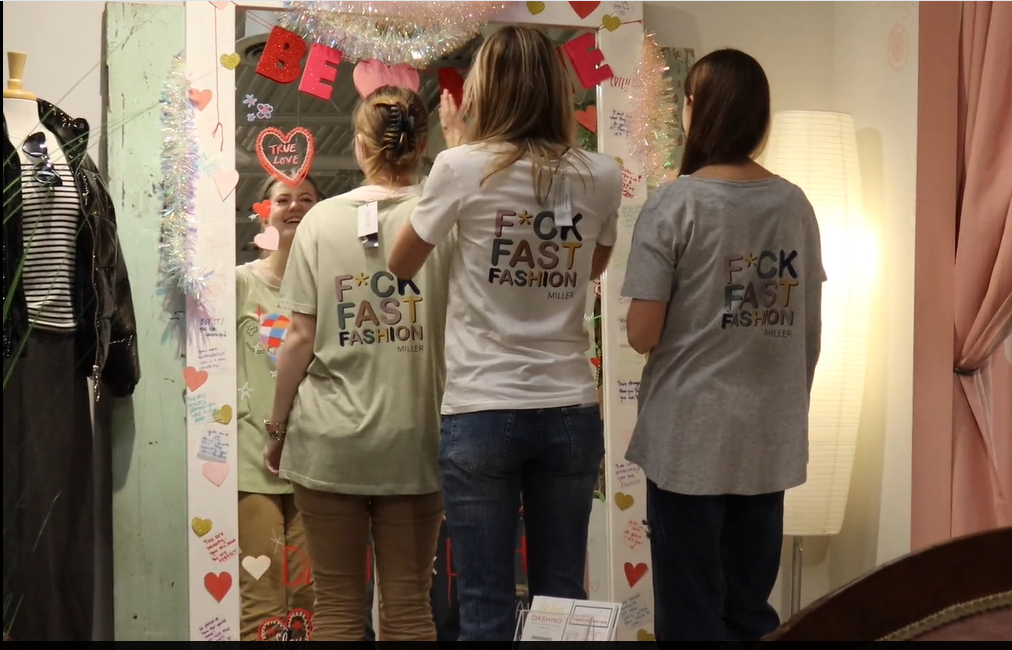You’re scrolling through TikTok, uninterested as you thumb through various videos, when one catches your eye. You stall your scrolling, watching as an influencer dumps a crate-load of clothing onto the floor, all of the items packaged into opaque bags with the same large logo: “Shein.” The influencer rips open the bags and clothes spill out, and they sort through the mess while promoting the brand, feeding you false realities of clothing that is of good quality and affordable.
This is just one example of a litany of issues produced by fast fashion. Thanks to low-pay labor, cheap materials, and inflated market prices, clothing companies’ profits are skyrocketing. Companies like Shein, H&M, and Zara are pumping out ads on social media, creating micro-trends of clothing styles that will be cycled out within a few weeks. The result of this mass consumption and quickening obsolescence of trends is piles of clothing overcrowding the Earth, adversely impacting poorer countries the most. These companies exploit their workers, paying them well below minimum wage and employing children to work for pennies. Not to mention the pollutants being expelled by these factories make fast fashion the second-largest contributor to climate change. These companies are polluting the Earth and exploiting their laborers just to make money, careless of its impact. Yet this issue is largely going unnoticed.
I recently created a mini-documentary about fast fashion, and it opened my eyes in many ways. When I was presenting the film to people, many came to me with the question: “What is fast fashion?” It was astonishing to see how little people knew about such a major issue. I don’t blame these people, of course, I was just taken aback by how no one is raising awareness about fast fashion. This problem is actively ramping up and killing the Earth, and yet no one is sounding the alarm. Climate activists may be calling for action on the whole, but for this to be truly effective, they must highlight the specifics. Fast fashion is one of the easier problems to solve when dealing with climate change, and yet hardly anyone knows about it. Instead of seeing videos on TikTok showing how to combat fast fashion, I’m overwhelmed with clothing hauls or “Amazon must-haves;” videos displaying cheaply made plastic objects that would likely be used once and then forgotten in a drawer.
Another thing that filming taught me was how much overconsumption plagued my life. I realized how frequently I was buying new clothes, cycling out ones that were only months old for the latest style. This overhaul was largely fueled by my decision to buy “trendy” clothes, even though they were not flattering on me or were not something I would normally wear. I was buying simply for the sake of buying, careless of how my decisions would impact the environment or my future.
The biggest takeaway to remember is that at the core of this issue lies the greedy corporations. Like many issues that plague modern society, it is due to money-hungry businesses hell-bent on trashing humanity for more profits. We cannot succumb to the over-consumption fad and allow them to win. We cannot allow fast fashion to destroy our environment.
Fast Fashion is an issue that can be solved on the individual level just as easily as it could be on the federal level. It does not take monumental changes to your life to help combat it. Simply reducing your monthly clothing consumption or buying more second-hand clothing can make a huge difference. Every step towards reducing our fast fashion tendencies is a step in the right direction.




